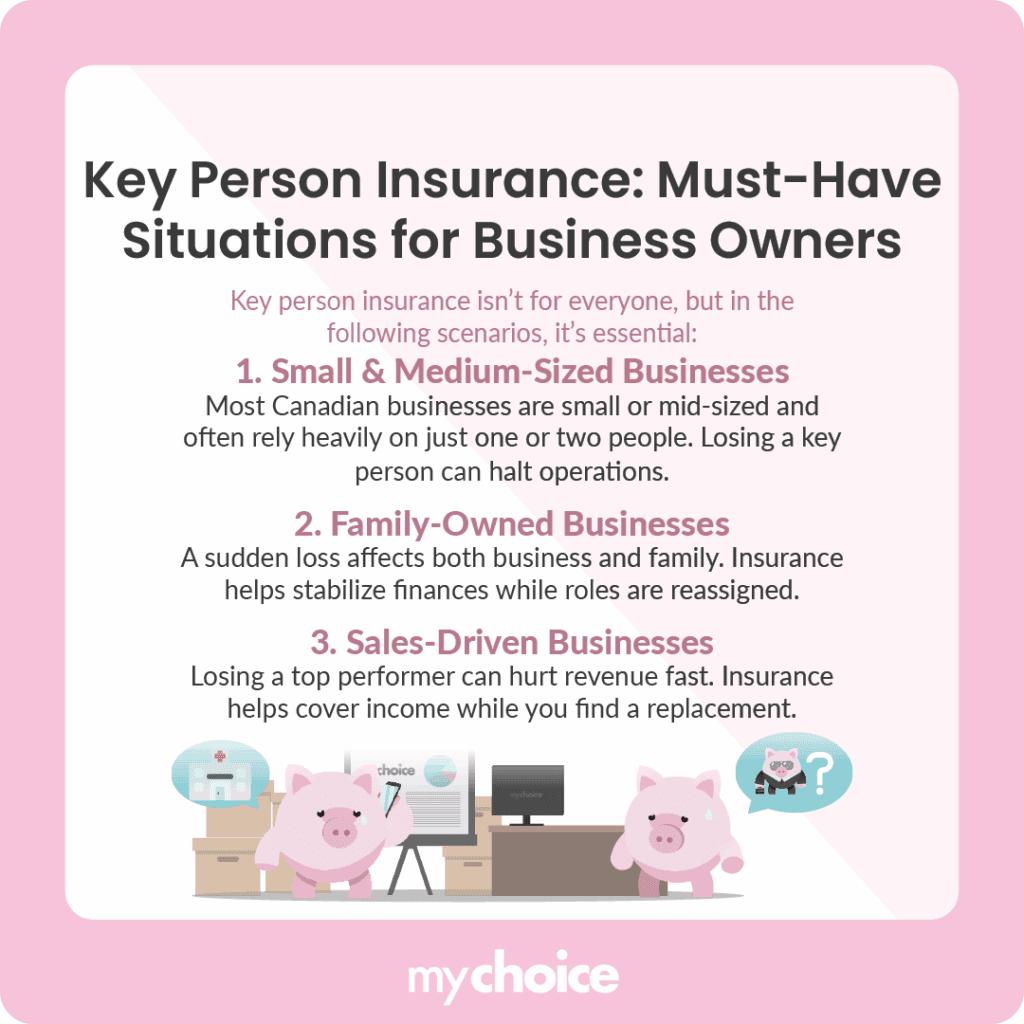Running a successful business means planning for the unexpected, and that includes protecting the people who are crucial to your company’s success. Imagine if your company‘s top salesperson or founder suddenly became seriously ill or passed away. Would the business be able to recover?
Let’s break down how key person insurance comes in during these times and how it can be the difference between staying afloat and shutting down.
What’s Included in Key Person Insurance?
Key person insurance typically includes a range of coverage options designed to protect a business from the financial fallout of losing a critical employee or executive. The core of this coverage is life insurance, which provides a lump-sum payout to the business if the insured person passes away. This can be used to cover immediate financial losses, maintain operations, and fund the recruitment and training of a replacement.
Many policies also offer critical illness coverage as a built-in option or add-on. This means the business can receive a payout if the key individual is diagnosed with a serious illness that prevents them from working, such as cancer or a stroke.
Coverage amounts are flexible and can be tailored to the specific financial risk the individual represents to the business. Whether it’s to offset lost revenue, protect a financing deal, or reassure investors, the policy value can be customized accordingly.
Scenarios in Which Key Person Insurance is a Must
While there’s no one-size-fits-all solution in business, there are many situations where key person insurance is a must. Here are a few to better illustrate the impact of not having this coverage:

How Losing a Key Person Affects Business Valuation
A key person is often someone who drives a large portion of the business’s revenue. Their sudden loss can dramatically affect your business’s value, whether you’re planning to sell your business, raise capital, or simply work on sustaining long-term growth. Here’s how:
CRA Tax Implications
While key person insurance can provide crucial protection, it needs to be structured thoughtfully to ensure the business receives the maximum financial and tax benefit from the Canada Revenue Agency (CRA). Let’s break down the key areas where tax implications come into play.
Firstly, you can’t deduct the premiums from your business income, whether it’s for term or permanent insurance for a key person. Premiums for life insurance used for key person coverage are not typically tax-deductible as a business expense. If your corporation is both the owner and beneficiary of the policy, the premiums are considered a capital expense, not an operating expense. These premiums do not reduce your taxable income in the year they are paid.
The real advantage of key person coverage is seen at the time of a claim. If structured correctly, the death benefit is generally received tax-free by the corporation regardless of the policy’s adjusted cost basis (ACB).
However, the ACB becomes important when determining how much of the death benefit can be credited to the corporation’s Capital Dividend Account (CDA), which allows for tax-free distributions to shareholders.
For permanent policies with a cash value, it gets more complicated. If there’s an investment component, the ACB can impact how much of the death benefit qualifies for CDA credit, and a portion of the policy’s growth could potentially trigger a taxable gain under certain conditions, depending on how the policy was structured.
This is why it’s essential to work with both a tax advisor and a licensed insurance professional to ensure your key person policy is properly designed, not just for protection, but also for tax efficiency.
Key Advice from MyChoice
- When determining coverage amount for key person insurance, consider the cost of replacing the person, potential lost revenue, and the time it would take to get back to normal operations.
- While key person insurance isn’t a tax deduction in the traditional sense, it can be an incredibly tax-efficient financial planning tool when used correctly. Consult a tax advisor or your insurance advisor to structure a plan for tax-free dividends and a tax-free death benefit.
- As your business grows, so do your risks. Review your key person insurance policy every year, or even sooner if you experience major staffing changes, raise capital, or plan to expand.








